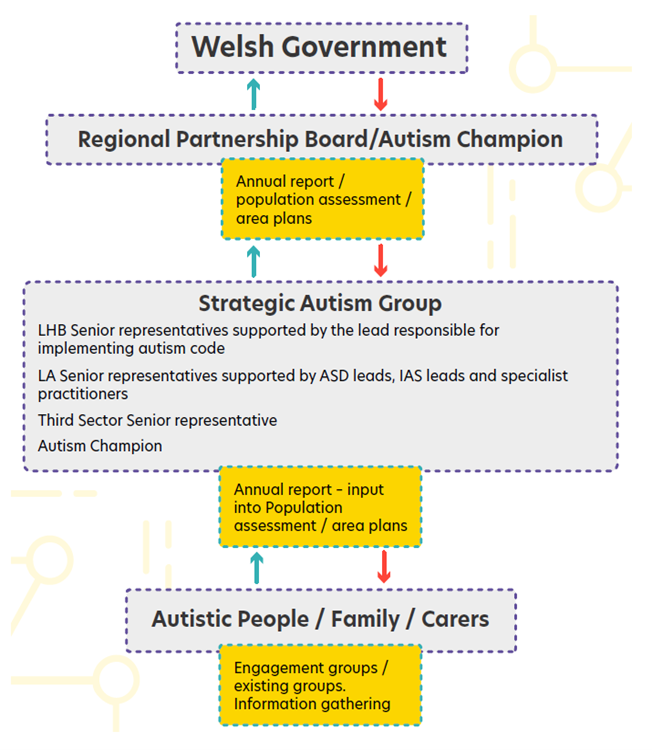To provide an assessment of the current services to determine the gaps and areas for improvement, engagements have been completed with autistic people, parents, carers and professionals.
In West Wales a regional strategic group of all key partners meets to oversee the implementation of services for Autistic people, including the Integrated Autism Service (IAS). This strategic group is chaired by the Head of Service within Hywel Dda University Health Board with the responsibility for Autism.
In each local authority there is an ‘Autism Lead’ a named contact responsible for overseeing and coordinating the activity in their area. This includes the coordination of local steering and stakeholder groups (with autistic people and their families) as well as training and awareness raising for staff.
Our engagement activities have been limited during the COVID 19 pandemic. However, our agreed approach for the future is set out below.
 Diagram illustrating the role of the Autism Champion in collating and sharing information to inform the Regional Partnership Board (Welsh Government, 2021)
Diagram illustrating the role of the Autism Champion in collating and sharing information to inform the Regional Partnership Board (Welsh Government, 2021)
Engagement through the strategic groups has allowed us to reflect what matters to autistic people in West Wales including the impact of the COVID-19 Pandemic on their wellbeing and care and support needs.
In addition, a virtual meeting was held with 10 parents of children and young people with complex needs, including autism.